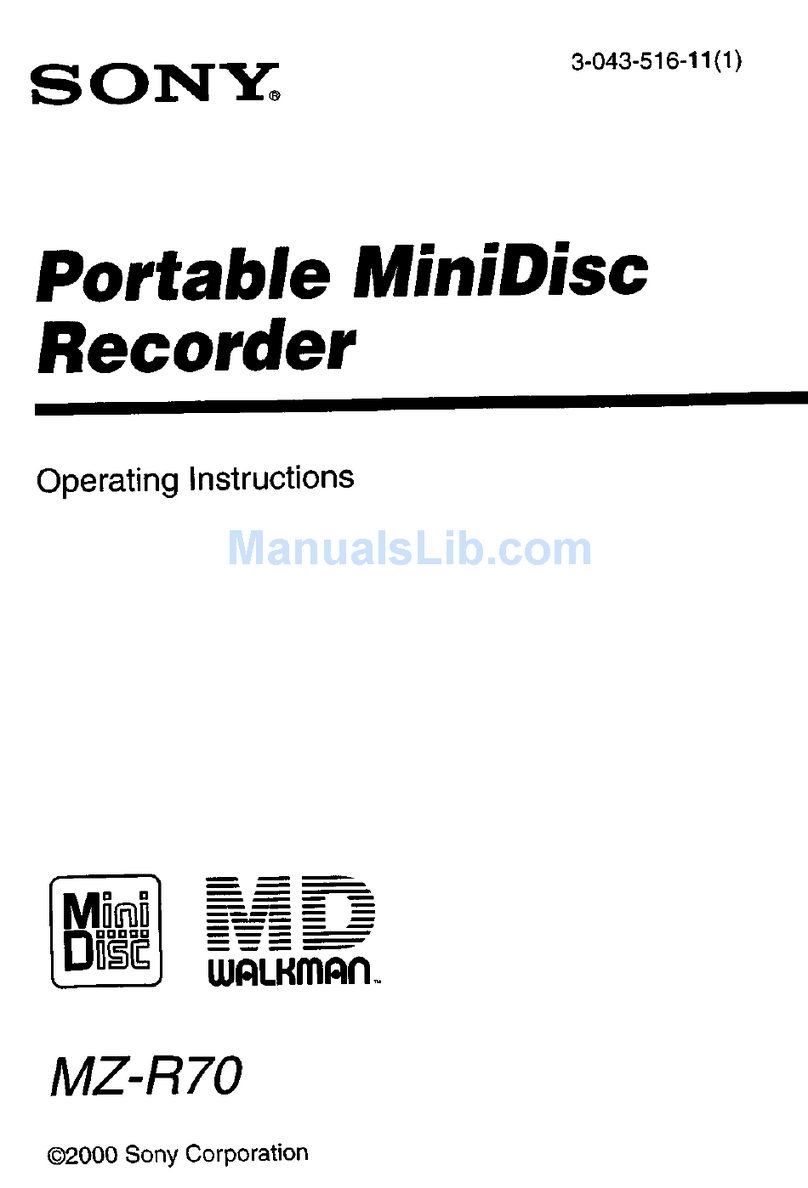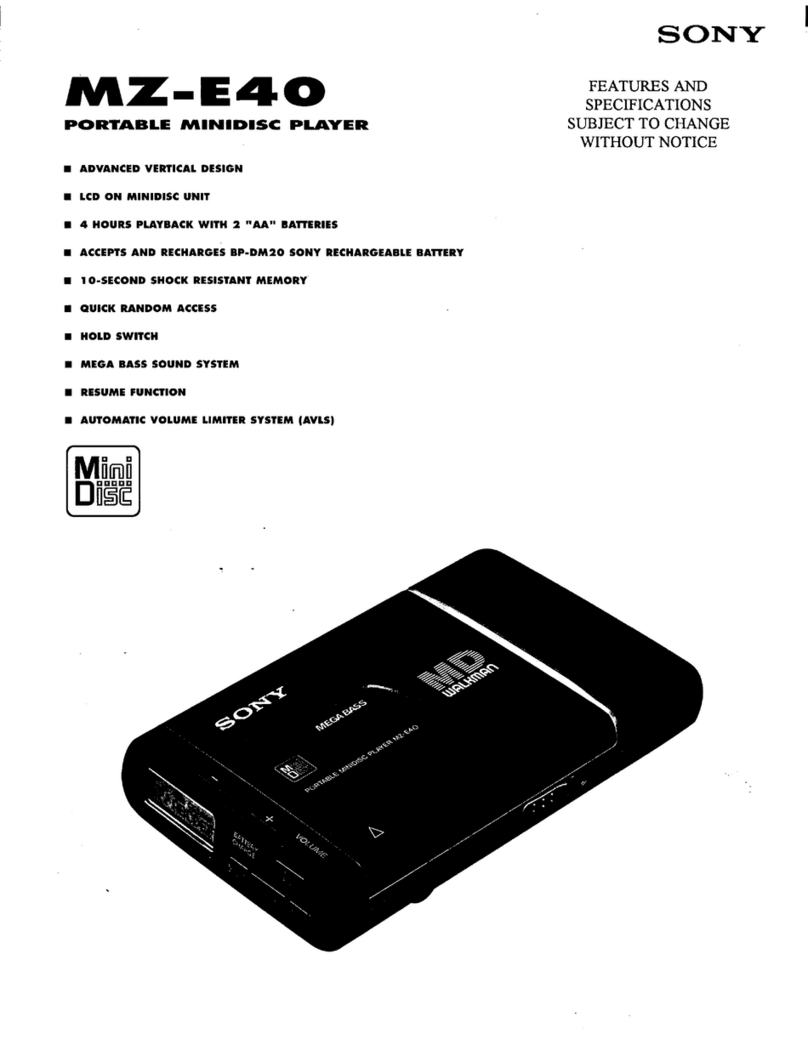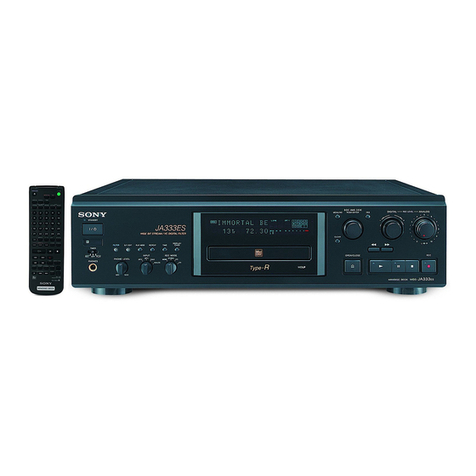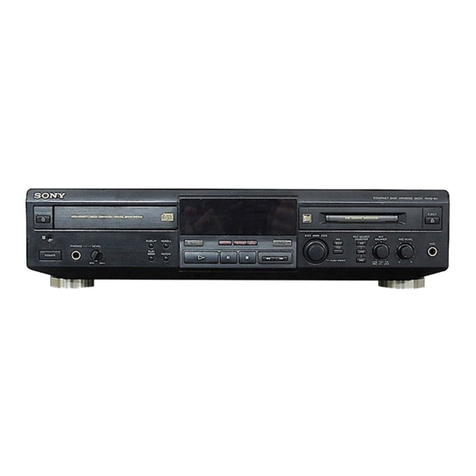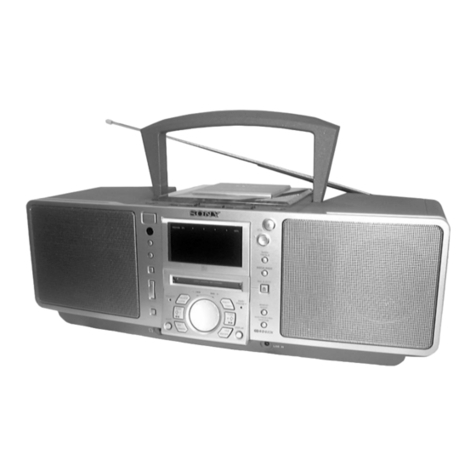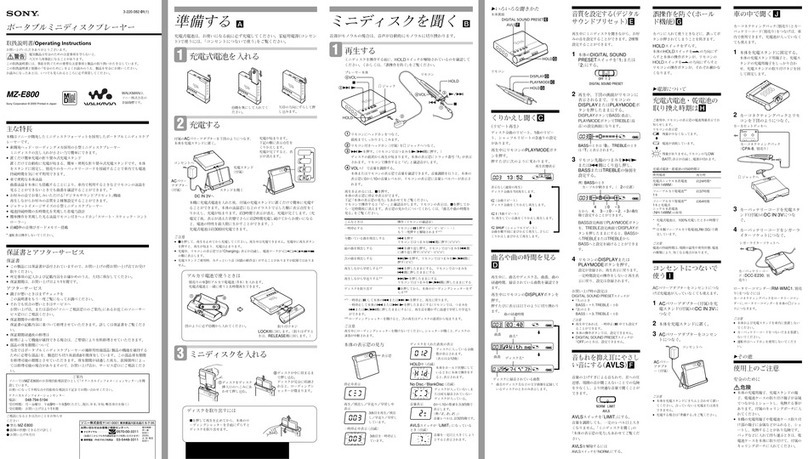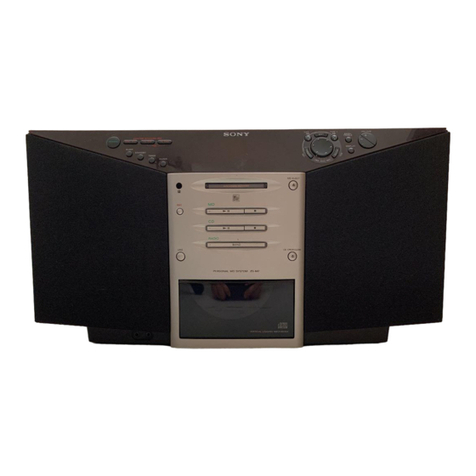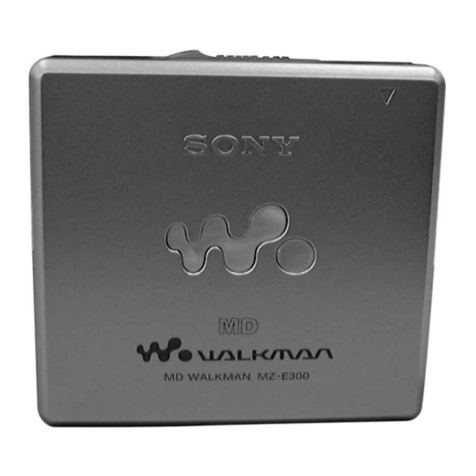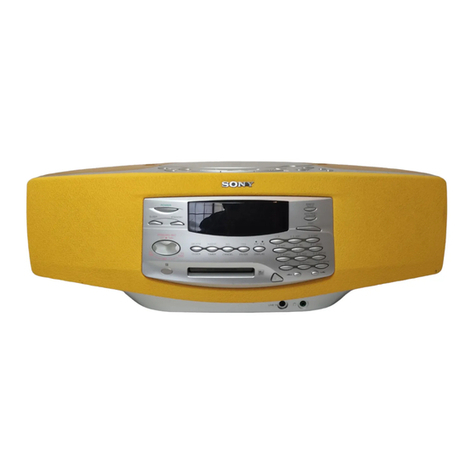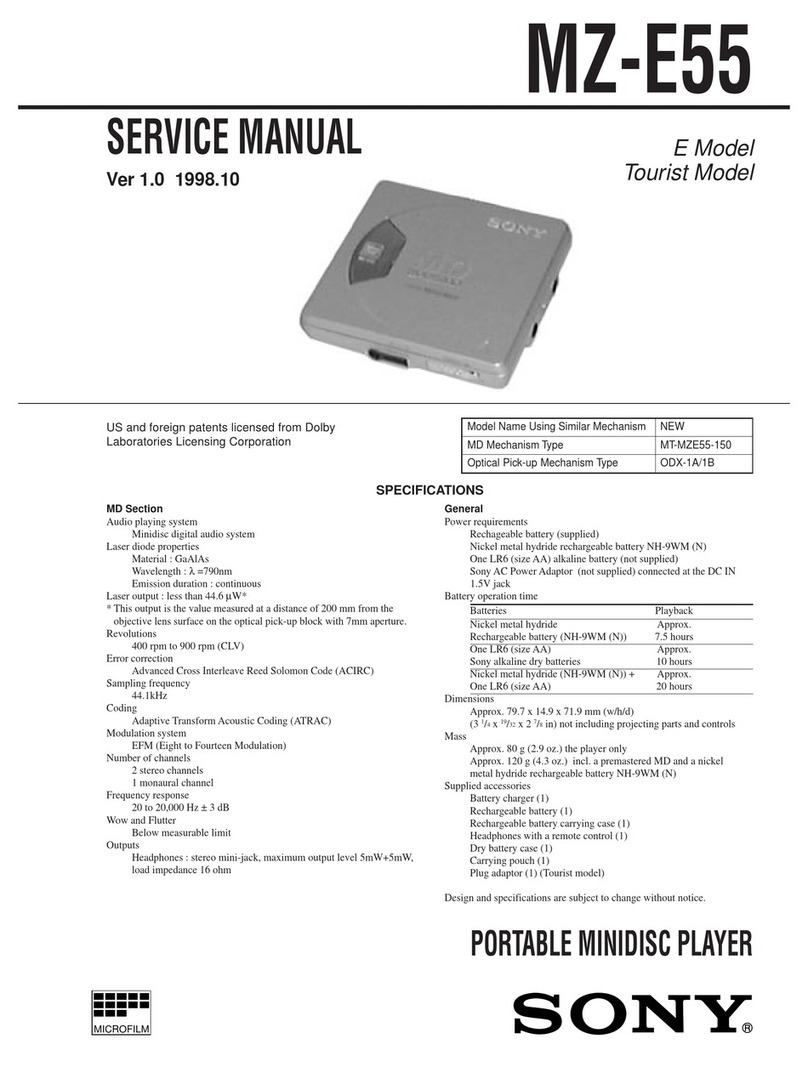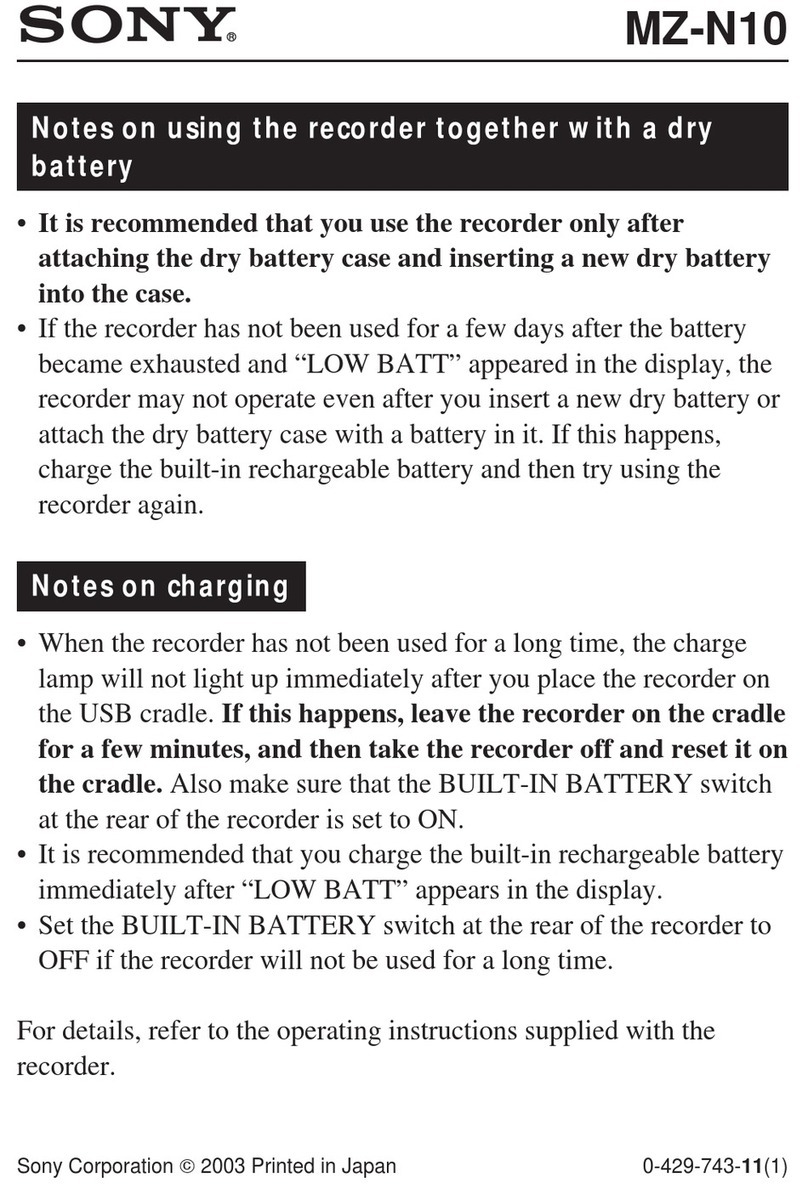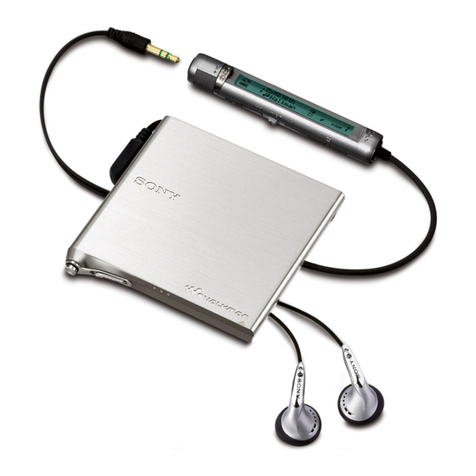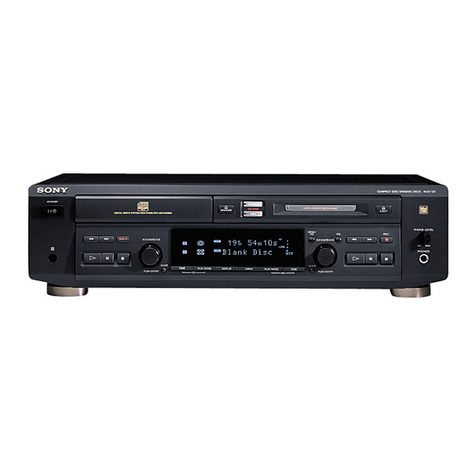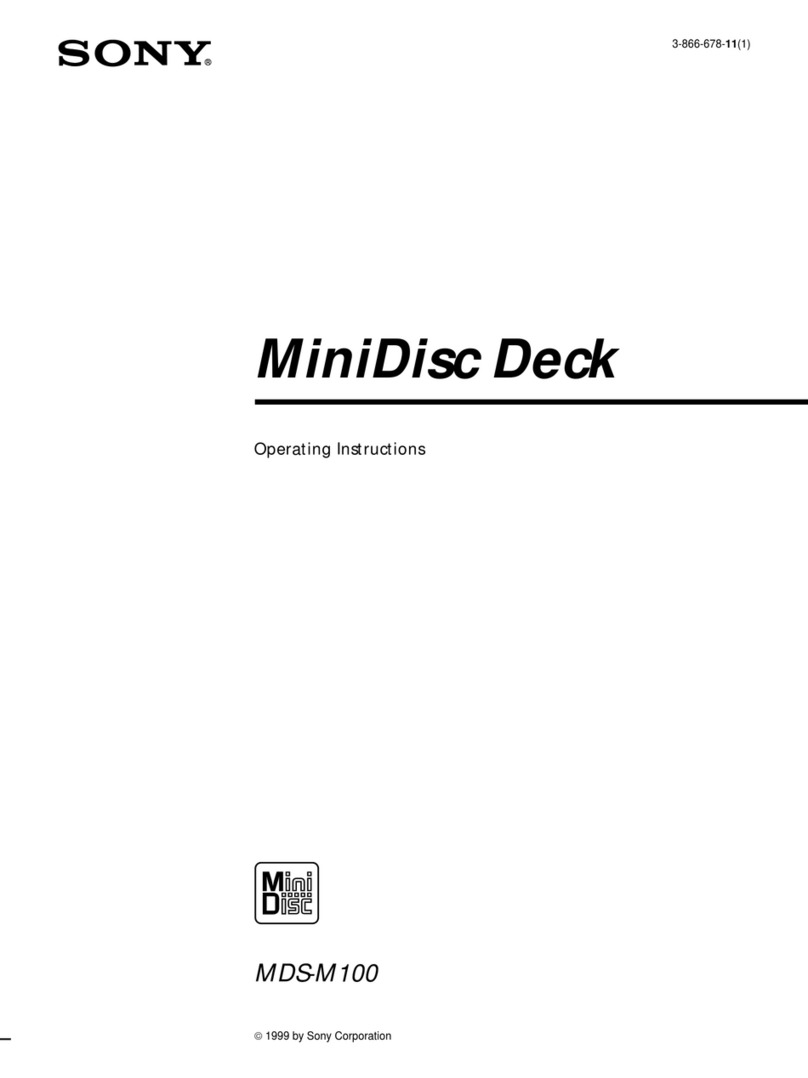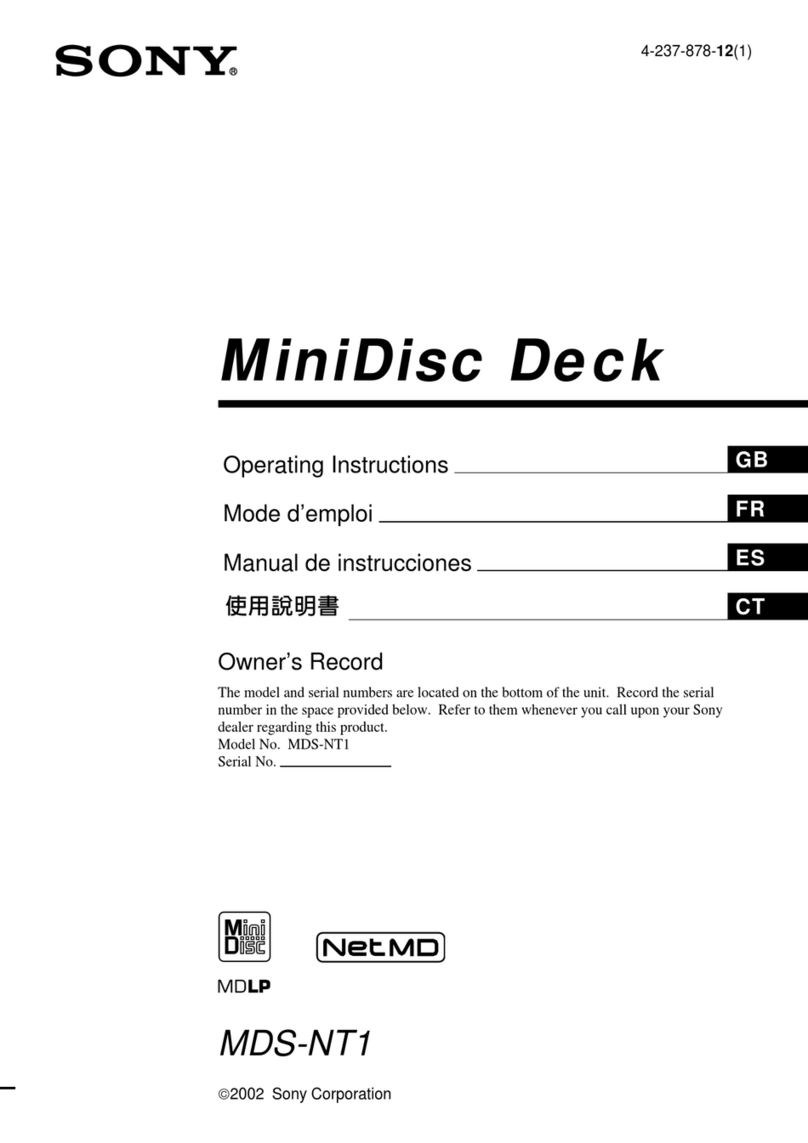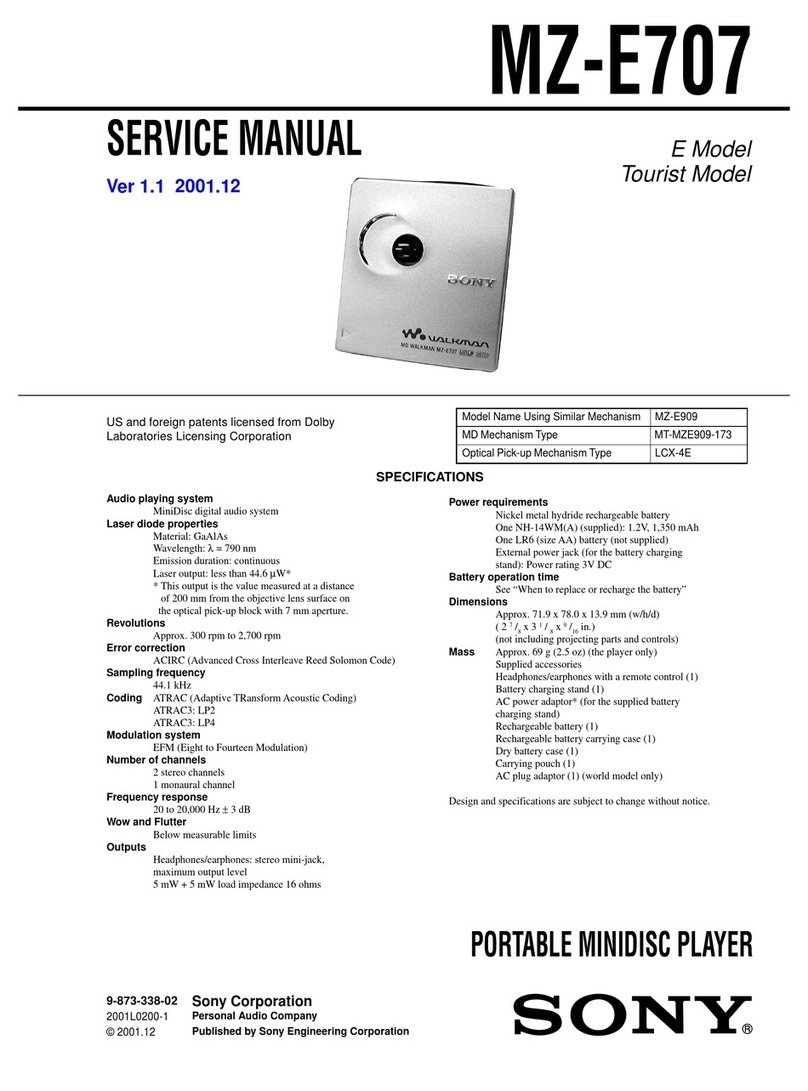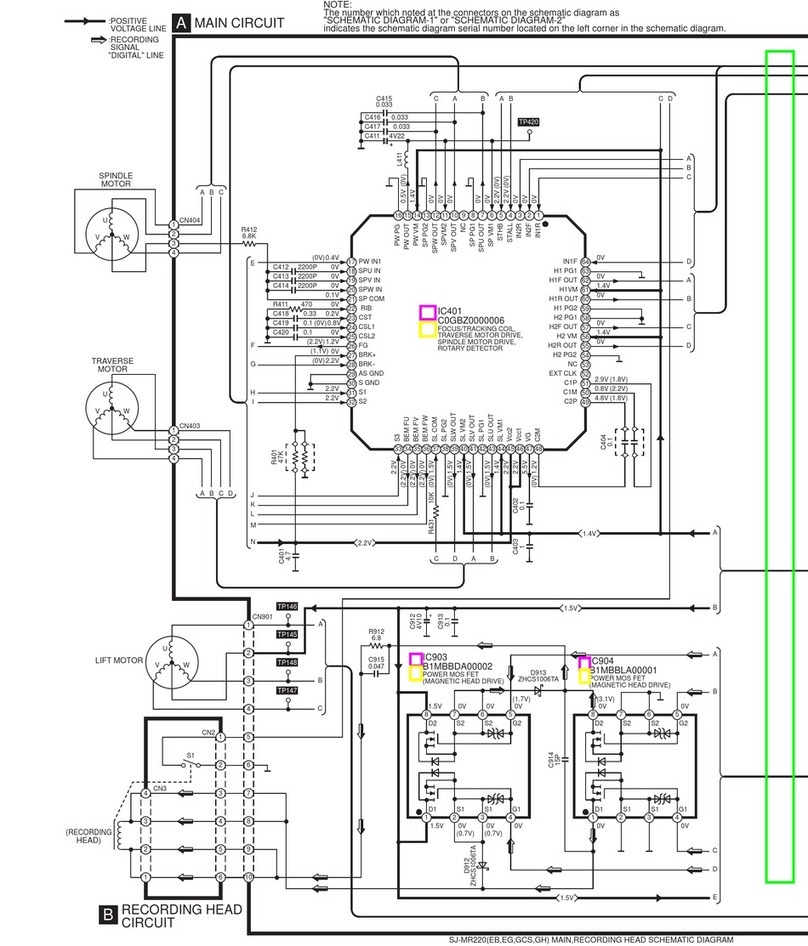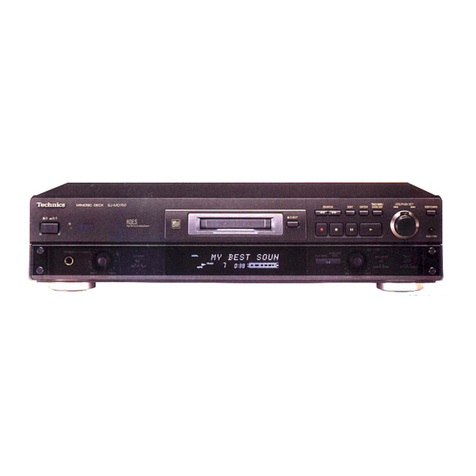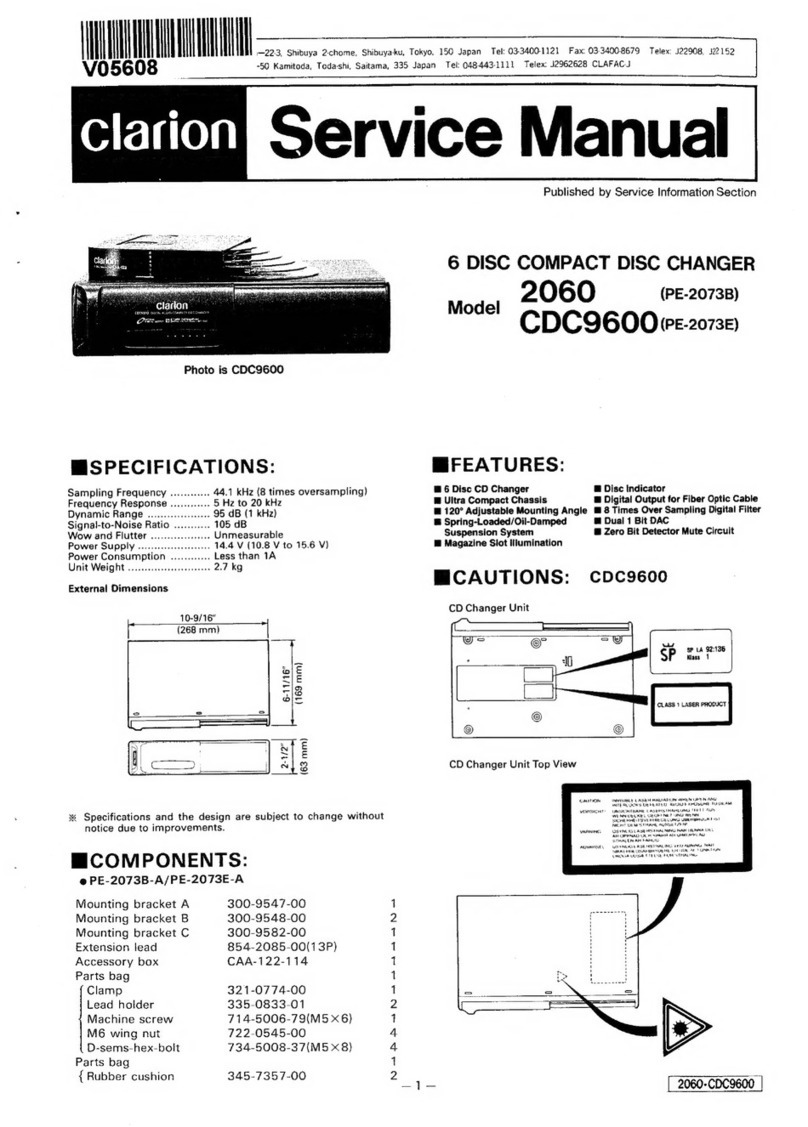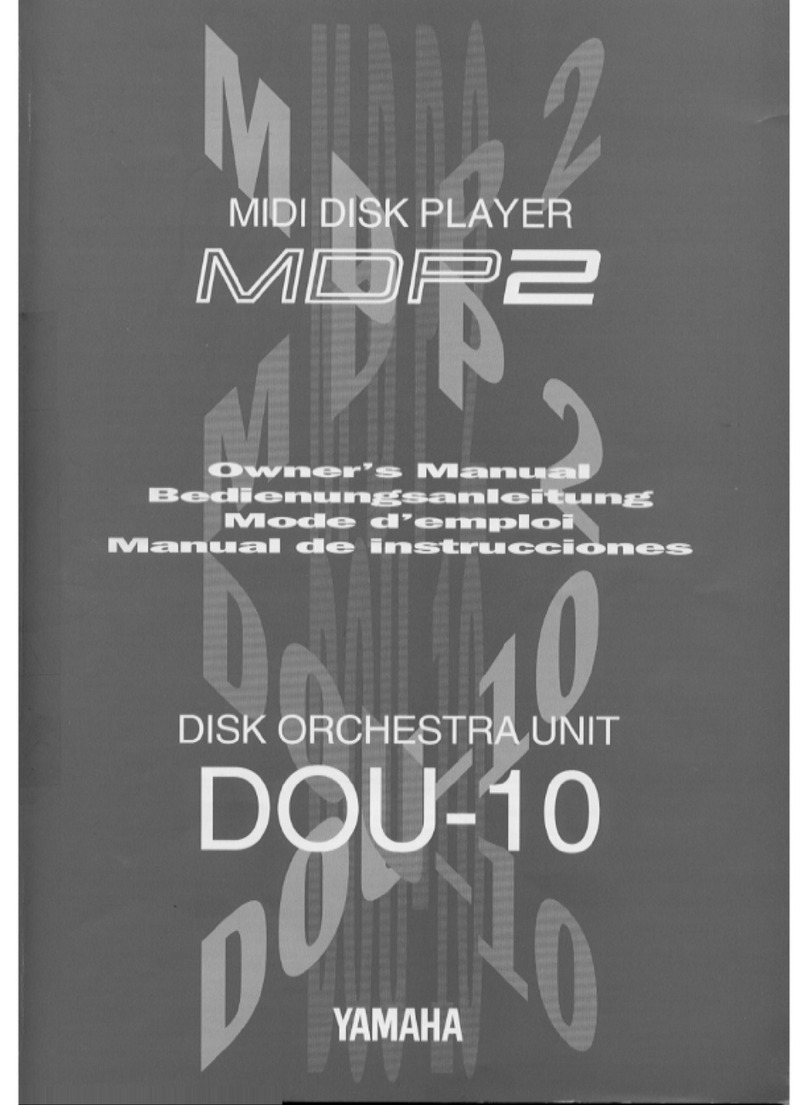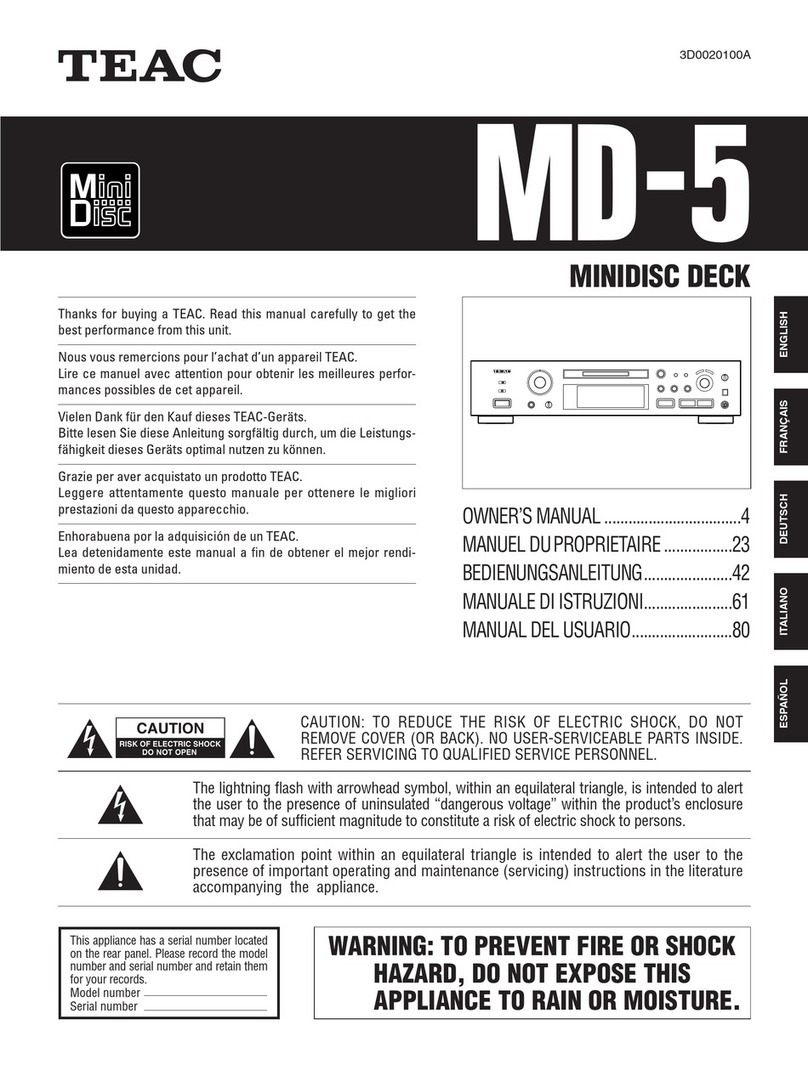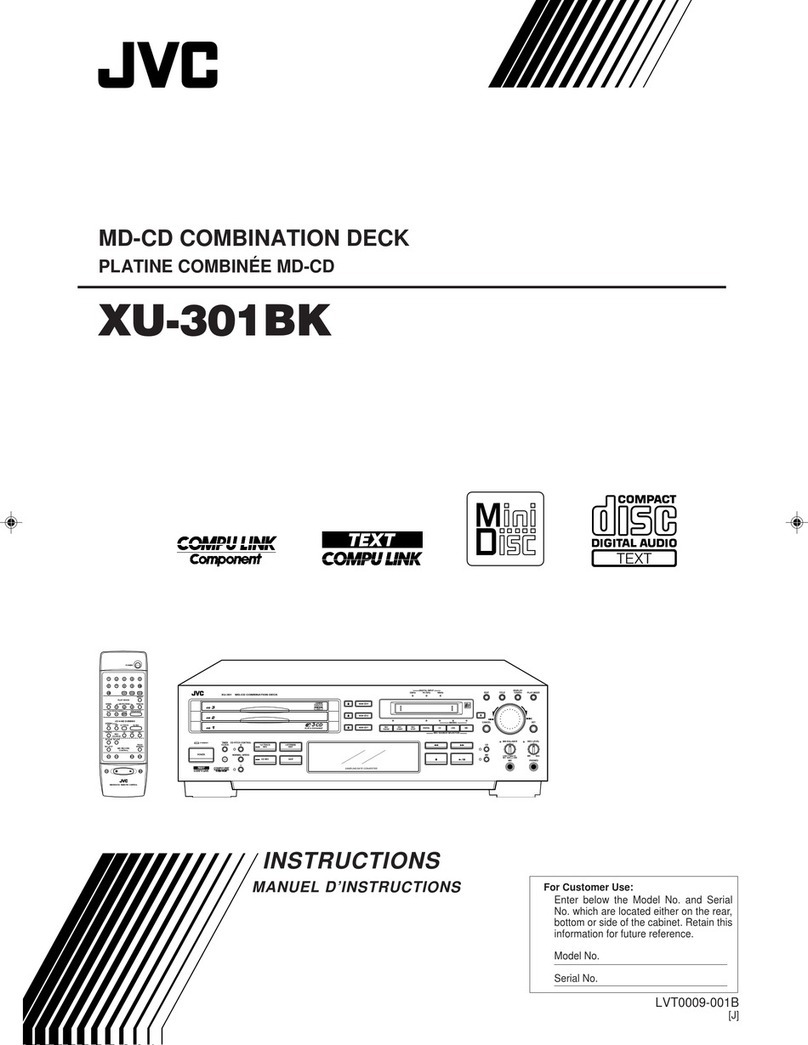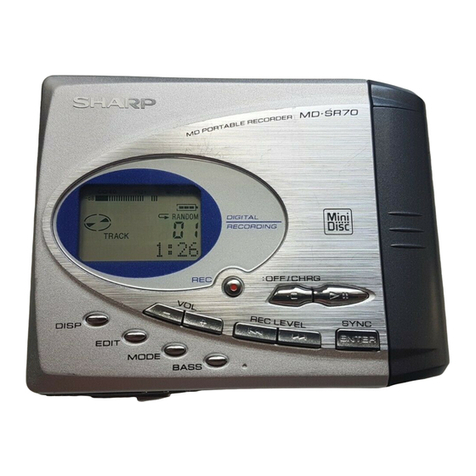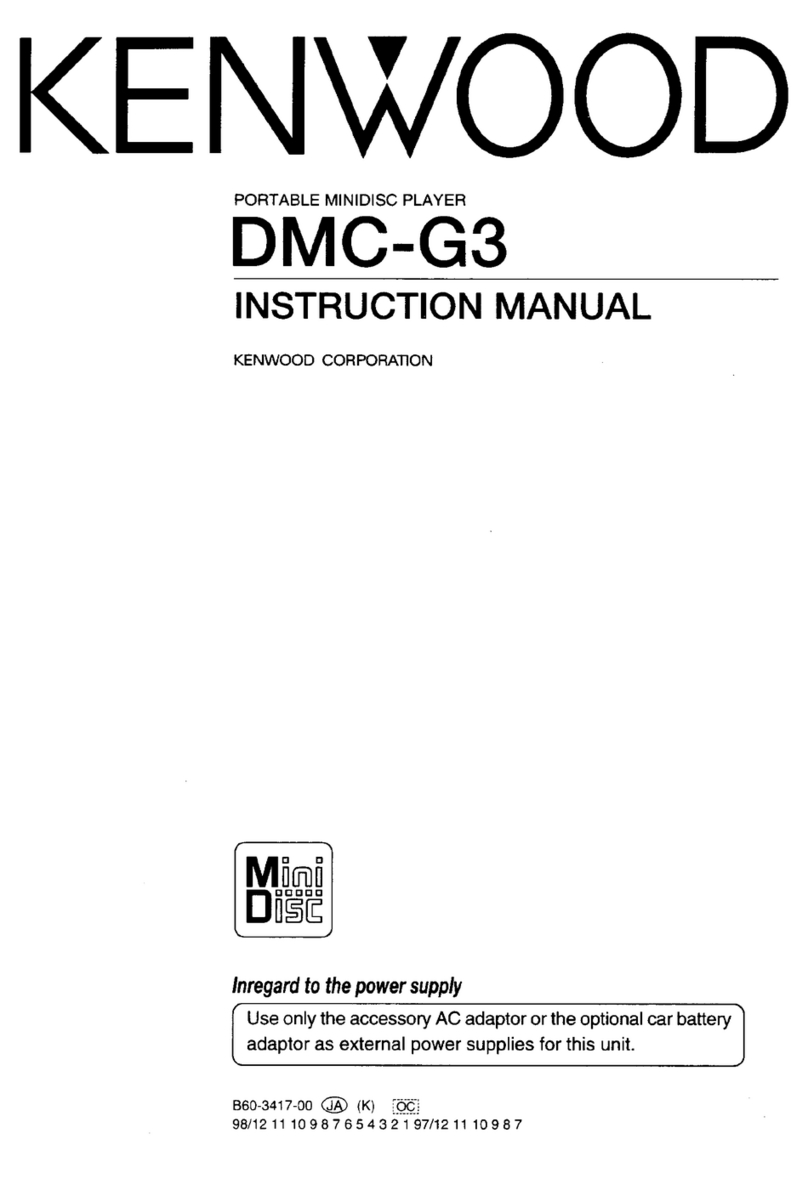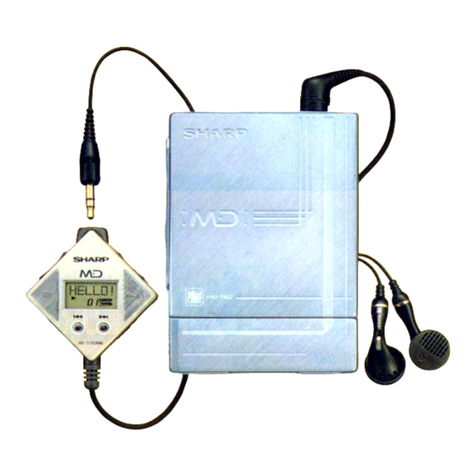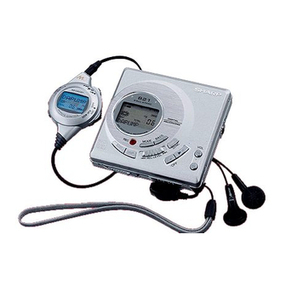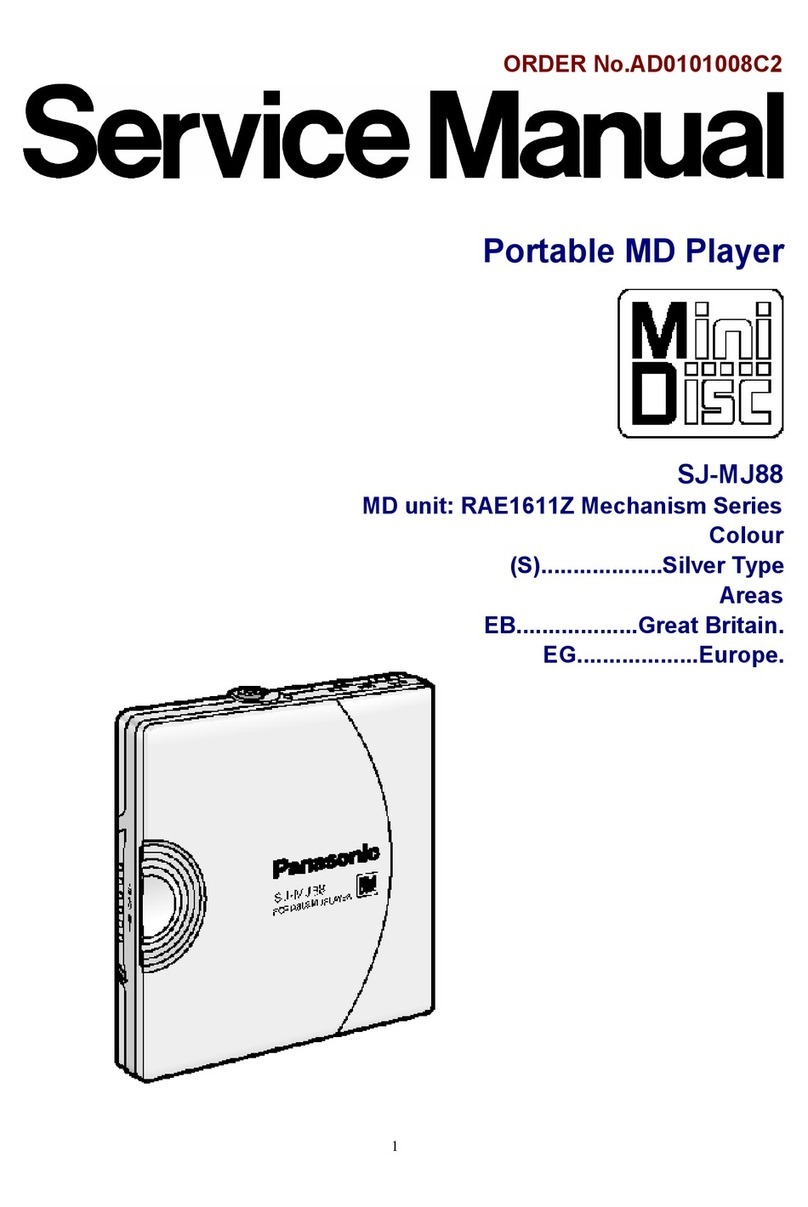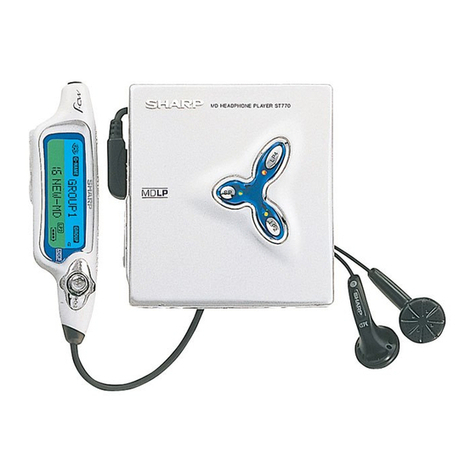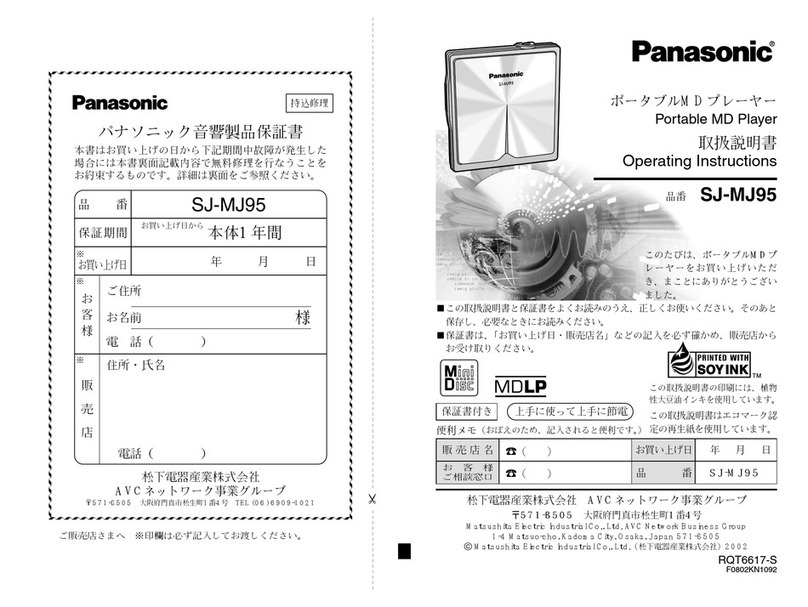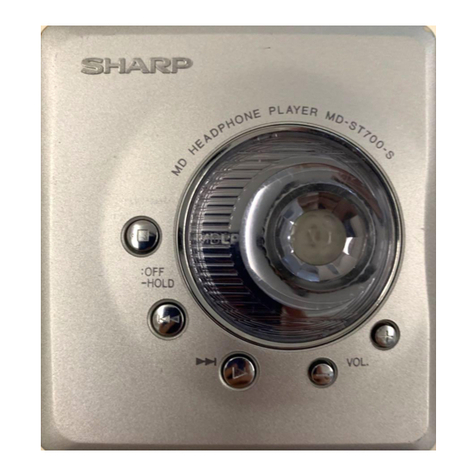– 2 –
Specifications ........................................................................... 1
1. SERVICING NOTE....................................................... 2
2. GENERAL
Location and Function of Controls .................................... 3
3. DISASSEMBLY
3-1. Upper Panel Assy ....................................................... 4
3-2. Bottom Panel Assy ..................................................... 4
3-3. Main board.................................................................. 4
3-4. Belt Assy, Front Panel Assy........................................ 5
3-5. Mechanism Deck Section ........................................... 5
3-6. Optial Pick-up Block Assy ......................................... 6
4. TEST MODE................................................................... 7
SAFETY-RELATED COMPONENTWARNING!!
COMPONENTS IDENTIFIED BY MARK !OR DOTTED LINEWITH
MARK !ON THE SCHEMATIC DIAGRAMS AND INTHE PARTS
LIST ARE CRITICALTO SAFE OPERATION.
REPLACE THESE COMPONENTS WITH SONY PARTS WHOSE
PART NUMBERS APPEAR AS SHOWN IN THIS MANUAL OR IN
SUPPLEMENTS PUBLISHED BY SONY.
Flexible Circuit Board Repairing
• Keep the temperature of the soldering iron around 270°C during
repairing.
• Do not touch the soldering iron on the same conductor of the
circuit board (within 3 times).
• Be careful not to apply force on the conductor when soldering
or unsoldering.
Notes on chip component replacement
• Never reuse a disconnected chip component.
• Notice that the minus side of a tantalum capacitor may be dam-
aged by heat.
TABLE OF CONTENTS
CAUTION
Use of controls or adjustments or performance of procedures
other than those specified herein may result in hazardous
radiation exposure.
IN NO EVENT SHALL SELLER BE
LIABLE FOR ANY DIRECT,
INCIDENTAL OR CONSEQUENTIAL
DAMAGES OF ANY NATURE, OR
LOSSES OR EXPENSES RESULTING
FROM ANY DEFECTIVE PRODUCT
OR THE USE OFANY PRODUCT.
“MD WALKMAN” is a trademark of Sony
Corporation.
This Mini Disc player is classi-
fied as a CLASS 1 LASER
product.
The CLASS 1 LASER
PRODUCT label is located on
the bottom exterior.
5. ELECTRICAL ADJUSTMENTS............................ 10
6. DIAGRAMS
6-1. Explanation of IC Terminals..................................... 13
6-2. Block Diagram.......................................................... 15
6-3. Printed Wiring Boards .............................................. 18
6-4. Schematic Diagram................................................... 21
7. EXPLODED VIEWS
7-1. Panel Section ............................................................ 28
7-2. Main Section............................................................. 29
7-3. Mechanism Deck Section ......................................... 30
8. ELECTRICAL PARTS LIST ................................31
SECTION 1
SERVICING NOTE
When repairing this device with the power on, if you remove the main board, this device stops working.
In this case, you work without the device stopping by fastening the hook of the Open/Close detection switch (S801) with tape.
Chassis ASSY
Main board
Tape
Open/Close switch (S801)
